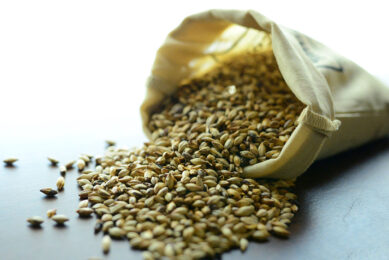How easy is it to diagnose and treat mycotoxins?
It’s now common knowledge that mycotoxins, harmful toxins produced by moulds, can create a variety of health problems for animals depending on species and type of toxins identified. Regulation limits are in place; however mycotoxin effects are synergistic in nature, meaning that combinations of low levels of mycotoxins can have a greater impact than a high level of a single toxin.
“Mycotoxins are now recognised as a genuine global threat to the feed industry. In the past two years, mycotoxin issues in the equine and pet industries have also been highlighted by the media. The decision to expand the features of www.knowmycotoxins.com reflects this reality,” said Alltech’s Global Mycosorb Manager, Dr. Jules Taylor-Pickard.
Some key facts about mycotoxins are:
· There are approximately 500 known mycotoxins.
· Animals are consistently exposed to multiple toxins.
· Interaction between toxins makes diagnosis difficult.
· Long term exposure to low levels of mycotoxins in the diet can reduce production and reproductive performance.
Producers should consider being proactive now. Testing samples and using a blending method are two common approaches.
However, once feed is contaminated there are no cost effective options currently available to remove the toxin from the feed and therefore, it has to be fed.
With this in mind, the use of an appropriate mycotoxin adsorbing product can help to minimise the negative effects on the animal.
Yeast cell wall
A glucomannan polymer extracted from the cell wall of the yeast cell, is a natural fibre source and can often be used at practical levels of inclusion against several mycotoxins.
A 2010 study from the University of Utrecht in the Netherlands conducted by Fink-Gremmels et al. selected dairy cows that were presenting disease conditions from three farms for experimental treatment with a yeast cell wall extract from Alltech.
Eighty-five percent of the cows supplemented with the product for two weeks showed reduced levels of oxidative stress, lower somatic cell counts and increased milk production.
The bottom line for producers and nutritionists is that the animal remains the best indicator of a mycotoxin presence.
Therefore, if that animal is not performing to its fullest, or unexplained symptoms persist, consider the role that a mycotoxin may be playing.
Mycotoxins are a leading area of study at Alltech. Through 31 years of research-driven product development, Alltech has created a range of natural solutions for the feed and food industries.
Join 26,000+ subscribers
Subscribe to our newsletter to stay updated about all the need-to-know content in the feed sector, three times a week. Beheer
Beheer









 WP Admin
WP Admin  Bewerk bericht
Bewerk bericht